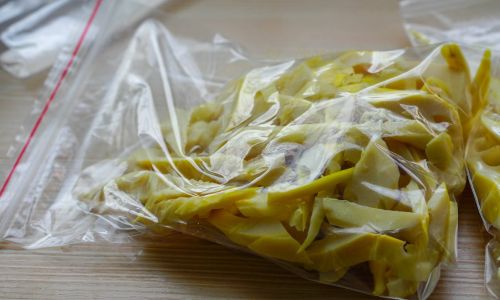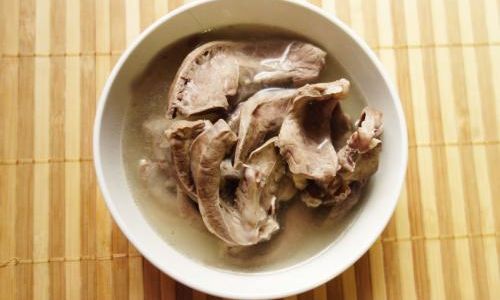Introduction

Tofu skin, also known as bean curd skin or yuba in some regions, is a thin, translucent layer formed on the surface of boiling soy milk during the production of tofu. It is highly valued for its delicate texture, mild flavor, and rich nutritional profile, containing high-quality plant-based protein, essential amino acids, vitamins, and minerals. Fresh tofu skin is particularly delightful when consumed immediately after production, but preserving its freshness without refrigeration can be challenging. This article delves into various methods for preserving fresh tofu skin at room temperature, exploring practical techniques that can extend its shelf life while maintaining its quality and taste.
Understanding Fresh Tofu Skin
Before discussing preservation methods, it’s crucial to understand the basic characteristics of fresh tofu skin. Fresh tofu skin is perishable due to its high moisture content and lack of preservatives. It is susceptible to microbial growth, leading to spoilage if not stored properly. The ideal storage conditions for tofu skin involve low temperatures to slow down bacterial activity. However, in situations where refrigeration is not available, alternative preservation techniques become necessary.
Factors Affecting Shelf Life
Several factors influence the shelf life of tofu skin at room temperature:
- Humidity and Moisture: High humidity can accelerate the growth of microorganisms, leading to faster spoilage.
- Temperature: Warmer temperatures enhance bacterial activity, shortening the shelf life.
- Packaging: Proper packaging can protect tofu skin from contaminants and reduce moisture loss.
- Handling: Cleanliness during handling and storage is crucial to prevent cross-contamination.
Preservation Techniques at Room Temperature
Given these factors, several methods can be employed to preserve fresh tofu skin at room temperature. Each method has its own set of advantages and limitations, and the choice often depends on the availability of resources and the desired shelf life.
Drying Method
One of the oldest and most effective ways to preserve tofu skin is through drying. Drying reduces the moisture content, creating an environment hostile to microbial growth. Here’s how you can do it:
- Preparation: Cut the fresh tofu skin into desired shapes and sizes.
- Blotting: Use clean paper towels or cloth to blot excess moisture from the surface.
- Drying: Lay the tofu skin pieces on a clean, dry surface in a well-ventilated area. Avoid direct sunlight if possible, as it can discolor the tofu skin. Allow it to dry until it becomes flexible but not brittle.
- Storage: Once dried, store the tofu skin in an airtight container or a sealed plastic bag. It can be kept at room temperature for several weeks to months, depending on the dryness.
Advantages:
- Extended shelf life.
- No need for refrigeration.
- Enhanced texture and flavor development through drying.
Limitations:
- Dried tofu skin requires rehydration before use, which can alter its texture slightly.
- Nutritional value may decrease slightly due to moisture loss.
Salt Preservation
Salt has natural preservative properties and can be used to extend the shelf life of tofu skin. Here’s a step-by-step guide:
- Preparation: Clean and dry the tofu skin thoroughly.
- Salting: Sprinkle a thin, even layer of fine sea salt or kosher salt on both sides of the tofu skin. Ensure the salt covers the entire surface.
- Wrapping: Wrap the salted tofu skin tightly in clean, dry cloth or paper towels to absorb any excess moisture.
- Storage: Place the wrapped tofu skin in an airtight container or a sealed plastic bag. Store it in a cool, dark place.
Advantages:
- Simple and inexpensive method.
- Effective in controlling microbial growth.
Limitations:
- Excessive salt can alter the flavor.
- Regular monitoring is required to prevent over-salting and moisture accumulation.
Vacuum Sealing
Vacuum sealing removes oxygen from the packaging, creating an anaerobic environment that inhibits the growth of aerobic bacteria. This method is highly effective but requires special equipment.
- Preparation: Ensure the tofu skin is clean and dry.
- Vacuum Sealing: Use a vacuum sealer to remove air from a plastic bag containing the tofu skin. Seal the bag tightly.
- Storage: Store the vacuum-sealed tofu skin in a cool, dark place.
Advantages:

- Extended shelf life due to oxygen removal.
- Maintains the original texture and flavor.
Limitations:
- Requires specialized equipment.
- Once opened, the shelf life is shortened.
Pickling
Pickling involves preserving tofu skin in a vinegar-based solution. The acidity of vinegar creates an environment unfavorable for microbial growth.
- Preparation: Clean and dry the tofu skin.
- Pickling Solution: Prepare a solution of vinegar and water (typically a ratio of 1 part vinegar to 3 parts water). You can add herbs, spices, or sugar to taste.
- Submersion: Submerge the tofu skin completely in the pickling solution. Ensure it is fully covered.
- Storage: Store the pickled tofu skin in a glass jar or other non-reactive container with a tight-fitting lid. Keep it in a cool, dark place.
Advantages:
- Adds flavor and texture variety.
- Natural preservative properties of vinegar.
Limitations:
- The vinegar flavor may not be suitable for all dishes.
- Nutritional value may decrease slightly due to acidity.
Freeze-Drying
Freeze-drying is a sophisticated preservation method that involves freezing the tofu skin and then removing the ice through sublimation under vacuum conditions. This method is typically used in commercial settings due to its complexity and cost.
- Preparation: Clean and dry the tofu skin.
- Freezing: Freeze the tofu skin until solid.
- Freeze-Drying: Use a freeze-dryer to sublimate the ice, leaving behind dried tofu skin.
- Storage: Store the freeze-dried tofu skin in an airtight container at room temperature.
Advantages:
- Exceptionally long shelf life.
- Maintains the original texture and flavor upon rehydration.
Limitations:
- High cost and specialized equipment required.
- Not suitable for home use due to complexity.
Natural Antioxidants
Certain natural antioxidants, such as vitamin E, rosemary extract, or ascorbic acid (vitamin C), can be used to extend the shelf life of tofu skin by inhibiting oxidative processes.
- Preparation: Clean and dry the tofu skin.
- Antioxidant Solution: Prepare a solution containing the chosen antioxidant in water or a suitable solvent.
- Soaking: Soak the tofu skin in the antioxidant solution for a few minutes.
- Drying: Pat the tofu skin dry to remove excess solution.
- Storage: Store the treated tofu skin in an airtight container at room temperature.
Advantages:
- Natural and safe.
- Can enhance the nutritional value.
Limitations:
- May alter the flavor slightly.
- Requires precise measurement and handling.
Conclusion
Preserving fresh tofu skin at room temperature is a challenge, but with the right techniques, it is entirely possible to extend its shelf life while maintaining its quality and taste. Each preservation method discussed—drying, salt preservation, vacuum sealing, pickling, freeze-drying, and using natural antioxidants—has its unique advantages and limitations. The choice of method should be based on the specific needs, resources available, and desired shelf life.
For home use, drying and salt preservation are practical and cost-effective options. For commercial settings, vacuum sealing and freeze-drying may be more suitable due to their ability to provide extended shelf life and maintain product quality. Regardless of the chosen method, cleanliness, proper handling, and storage conditions are crucial to ensuring the success of tofu skin preservation at room temperature.
By understanding the factors affecting shelf life and employing effective preservation techniques, tofu skin lovers can enjoy this delicious and nutritious food item even when refrigeration is not an option. With a bit of planning and effort, fresh tofu skin can be preserved for extended periods, allowing for its versatile use in various culinary creations.





0 comments